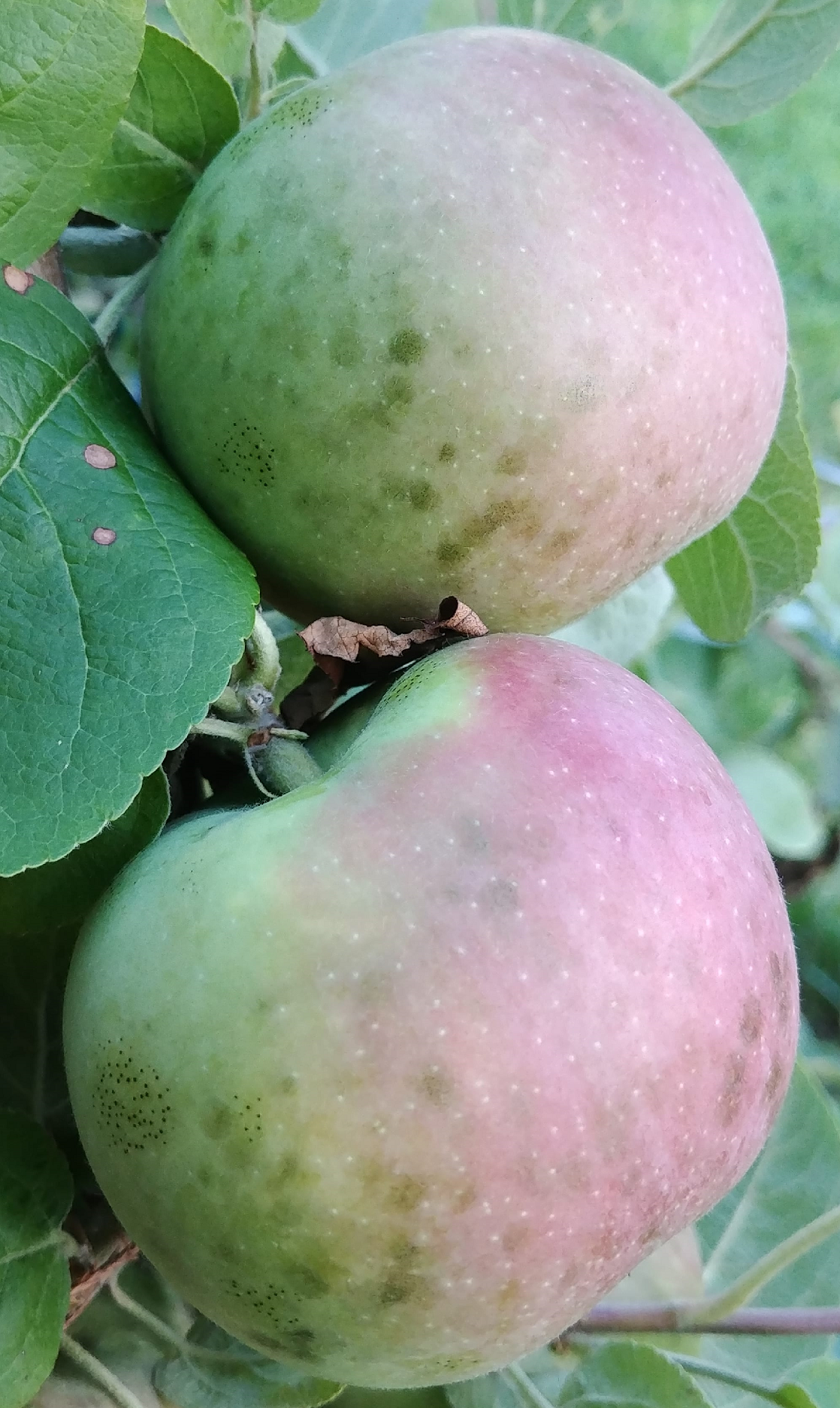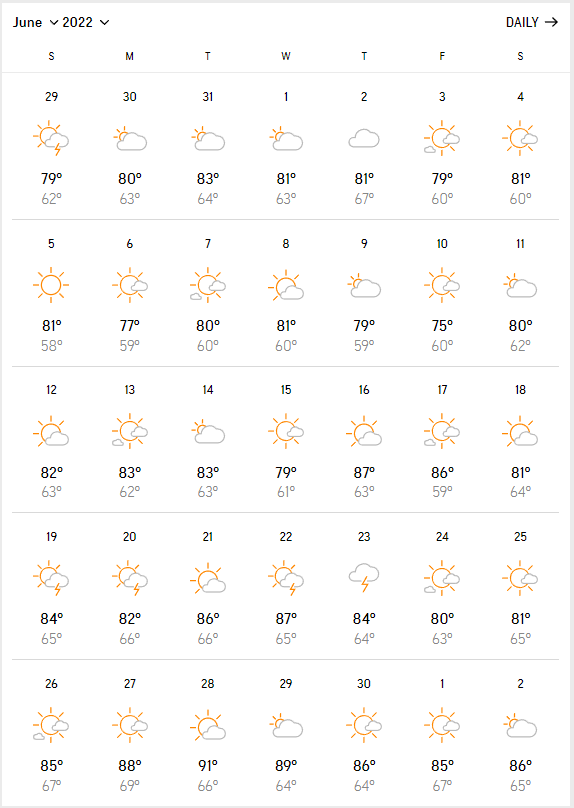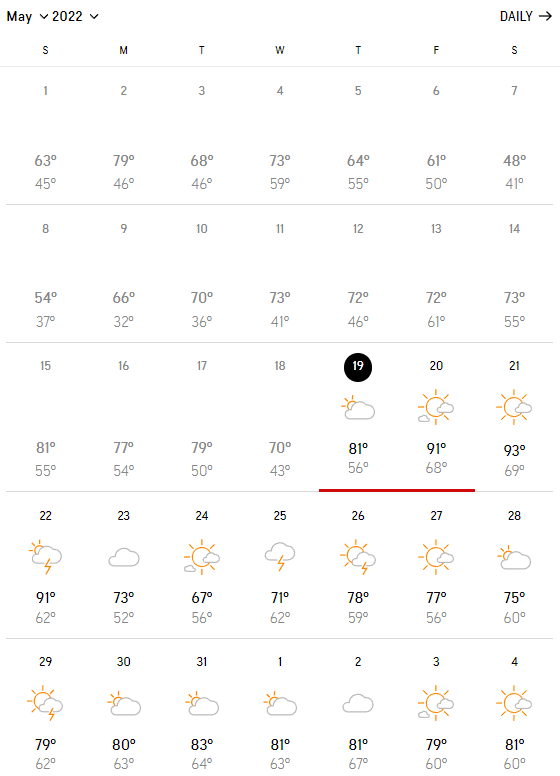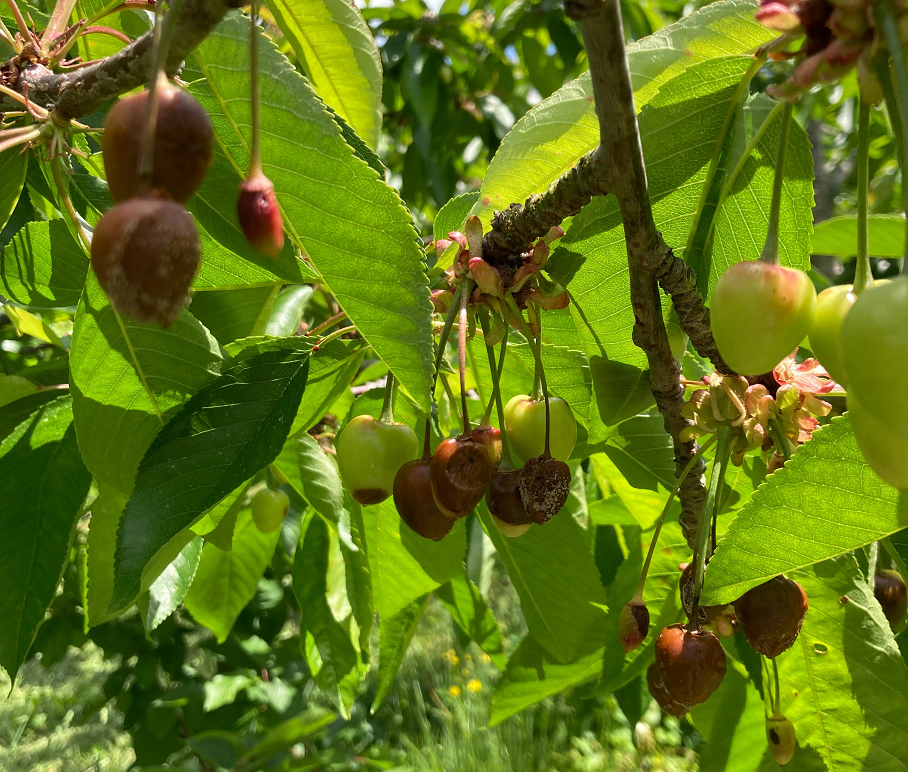1. First SB&FS Infections Predicted/Occurred As Per NEWA Model, Varying by Location; 2. First Brown Rot Visible On Cherries

1. Sooty Blotch and Flyspeck (SBFS) of apple are caused by a large group of fungi which grow superficially on waxy cuticle of apple fruit. Usually, flyspeck caused by Zygophiala jamaicensis shows first and then the sooty blotch appears, which is caused by a complex of species including Schizothyrium spp. Besides cosmetic issues that will reduce the price of apples, sooty blotch can also shorten fruit storage life because it allows increased water loss. We use an assumption that there is a reduced risk from this disease between PF and the time until an orchard accumulates 190 hours of accumulated leaf wetness hours (ALFW) counting these hours from First Cover (FC = 10 days after petal fall) and using NEWA data for your specific location. Looking for the AREC Winchester weather station data, NEWA SB&FS prediction model is now showing 177 ALWH and predicts that we will reach 190 ALWH somewhere around or after 24 May (Fig. 1). Based on weather data for Washington VA (Gadino cellars) we only have 122 ALWH (Fig. 2). In Madison Virginia (Fig. 3), we already surpassed the 190 ALWH and are at 238 ALWH. This calls for vigilance in looking at the SB&FS model daily to determine where are you before reaching 190 ALWH, so as to apply an effective fungicide mix just before you reach 190 ALWH.
We had a slow, lingering PF in 2022, and the long term weather forecast (Fig-s 4, 5) for the rest of May and late June (Fig-s 1 and 2) shows we will have wet weather continuing in May, then a hot period from 1 to 18 June and then rain will be back. It is of utmost important to use NEWA SBFS model to detect if you already have reached 190 ALWH and needed to have a fungicide effective against SB&FS fungi applied, or to apply it just before the 190 ALWH. You also have an option to put in the date of your last fungicide application in the NEWA model and this will re-calculate the days of ALWH and give you a new prediction when you need to apply fungicide for SB&FS i.e. just before 190 ALWH. Reaching 190 h ALWH will allow abundant flow of SBFS spores into apple orchards from surrounding woodlots or forests. The spores are coming from near-orchard vegetation in hedgerows and forest trees lots where the SBFS fungi overwinter on the waxy cuticle of canes, shoots, twigs, fruit and leaves of large number of inoculum reservoir plant hosts. From there, SBFS spores are spread to pome fruit by wind or wind borne rain aerosol drops. In a year like 2022, due to so much rain we had, SBFS infections can start on fruit as early as 2-3 weeks after petal fall. Symptom occurrence after infections are initiated is of course all dependent on environmental factors and can take place for several weeks to months later. I think we are expecting the former i.e. harder scenario in 2022, where moderate to warm temperatures ahead with prolonged leaf wetness periods and high RH will trigger symptoms to appear sooner than later if cover sprays with fungicides are not applied on a tighter schedule.
Be diligent to use NEWA model to not surpass the 190 hr of accumulated wetting from FC. Just before the weather forecast predicts you will reach the 190-hr of accumulated leaf wetting from FC, start your SBFS spray program. After you start(ed) your SBFS program, one cover spray is worth: 14 days or 2 inches of rain, whichever comes first, but if no rain falls for 14 days, extend the spray interval to 21 days, under the condition that no rain occurs during the 7 additional days. If rain event occurs between during additional 7 days, we will apply fungicide before that rain regardless did we reach 21 days or not. In commercial orchards, we have to make sure that there is almost always enough fungicide residue to prevent SB&FS. My recommendation to use at 2nd and 3rd cover would be:
Captan 3 LB/A + Prophyt** 64 fl.oz./A or
Captan 3 LB/A + Topsin M** 1 lb/A or
Captan 2.5 – 3 LB/A + Ziram 6 lb/A or
Captan 3 LB/A or
Ziram 6 lbs/A
Other fungicides like Flint Extra, Luna Sensation,Pristine and Merivon are even more effective and should always be combined with captan, but my recommendation is to restrain on applying them now until pressure from bitter rot starts, which is at end of May to beginning of June in Virginia. These strobilurin fungicides (Group 11) are much more needed for bitter rot control and the above combinations will do just fine against SB&FS.


2. Symptoms of stone fruit bitter rot are visible in Delaplane, VA on cherry fruit (Fig. 6). So far we had a cool and wet spring and this allowed high brown rot pressure with and a lot of rain we received. This scenario called for more applications of Rovral or other fungicide choices on flowers before each rain (e.g. Inspire S. 18 fl oz, Rally 6.0 oz, or Tilt 4 fl oz, or Indar 6 fl oz, or Elite 5 oz or Merivon 6.7 fl. oz). After, one to three applications so far of these optiosn, we usually switch to Bravo that is applied until shuck split.

